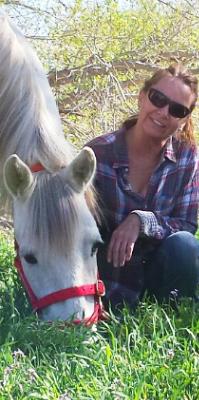
Where Rescued Animals Rescue People – Why Horses?
According to Dr. Laurie Sullivan-Sakeada, a Utah based Clinical Psychologist and leading practitioner of EAP, horses are prey animals, and, like those who have been to war, rely on their heightened senses for survival. They react to and mirror the emotions of visitors directly, without words. Horses respond negatively to negative emotions. They respond positively to positive emotions, and they have no ulterior motives.
“They are just there,” says Sakeada, “providing non-verbal feedback.” The horses are therapeutic and interactive tools that speed up the therapy process substantially. Dr. Sakeada notes that one session of EAP in the barn is equal to five session “on a couch.”
Emotional Healing:
In Equine Assisted Psychology, horses are used as tools for military veterans to gain self-understanding and emotional growth. It recognizes the bond between animals and humans and the potential for emotional healing that can occur when a relationship is formed between two species. In most cases, the horses are not ridden, and usually are not tethered in the arena, but allowed to roam free. Exercises can be as simple as giving the participant a halter, and letting them figure out how to approach the horse and put it on.
Confidence:
The learning and mastery of a new (horsemanship) skill-enhances participant’s confidence in their ability to tackle new projects, such as recovery, and leads to improved self-esteem.
Self-Efficacy:
Learning to communicate and achieve harmony with a large animal promotes renewed feelings of efficacy. A motivated “I can do it!” replaces feelings of helplessness, de-motivation, by empowering the person to take on new challenges in other areas of recovery.
Self-Awareness:
Riding helps participants to develop a more realistic view of themselves through awareness of their size in relation to the horse. This is especially important in treating clients with eating disorders as well as those with interpersonal aggression problems.
Communication:
Horses’ sensitivity to non-verbal communication assists participants in developing greater awareness of their emotions, the non-verbal cues that they may be communicating, and the important role of non-verbal communication in relationships.
Trust:
Learning to trust an animal such as a horse also aides in the development, or restoration, of trust for those whose ability to trust has been violated by difficult life experiences such as physical or sexual abuse, abandonment, neglect, or marital infidelity.
Perspective:
Through grooming activities and other types of care for a specific horse, participants are able to put aside the absorbing focus of their mental illness, such as depression ruminations, and instead to direct their attention and interests outwardly toward safe and caring interactions.
Anxiety Reduction:
Many studies of human-animal interaction indicate that contact with animals significantly reduces physiological anxiety levels. Some participants are initially afraid of horses. But horses’ genuineness and affection allay these fears, helping participants to embrace exposure therapy for their anxiety issues.
Decreasing Isolation:
For many individuals with mental illness, there is a long-term or recent history of feeling rejected by, and different from, other people. Mental illnesses are intrinsically isolating experiences. The horse’s unconditional acceptance invites participants back into the fellowship of life.
Self-Acceptance:
Many participants are intially concerned that they will do something embarrassing while learning about or riding the horses. Yet participants quickly learn that the other participants are engaged in their own equine experiences, and they observe the comfort of the horses in their own skin. Fears of embarassment in public are thereby often reduced and self-acceptance increased.